A standard 1961 dime is worth $3.45-$3.95 based on silver content, whether it has a “D” mint mark (Denver) or no mint mark (Philadelphia). Uncirculated coins fetch slightly more. However, error coins can be significantly more valuable: clipped planchet errors can reach $30+ in mint condition, while blank planchets, date errors (like the lower “1” variety on 1961-D), broad strikes, off-center strikes, and missing clad layers also command premiums. To determine your coin’s value, check for the mint mark below the date, inspect for errors like clipped edges or unusual features, assess the condition, and consider professional appraisal if you suspect a valuable error.
Most 1961 dimes sitting in your change jar are worth their silver content—around $3.45 to $3.95 depending on current melt values. But specific minting errors can transform these common coins into collectibles worth $30 or significantly more. Understanding which varieties command premiums and how to spot them can help you identify whether your Roosevelt dime deserves a closer look or professional grading.
Understanding the 1961 Roosevelt Dime Basics
The United States Mint struck Roosevelt dimes at two facilities in 1961: Philadelphia (no mint mark) and Denver (D mint mark). Both versions contain 90% silver and 10% copper, weighing 2.5 grams with a diameter of 17.9 millimeters. The Philadelphia facility produced approximately 96,758,244 dimes that year, while Denver minted around 209,146,550 pieces.
For circulation-grade examples, the intrinsic silver value drives pricing. At current silver prices, this translates to $3.45 to $3.95 for worn specimens in Good to Fine condition. Uncirculated examples without errors typically sell for $5 to $8, depending on the strength of the strike and presence of contact marks.
The mint mark location appears on the reverse side, directly below the torch and between the oak and olive branches. Philadelphia coins carry no mint mark, while Denver issues display a small “D” in this position.
Standard Grade Values Without Errors
| Grade | 1961 (No Mint Mark) | 1961-D |
|---|---|---|
| Good (G-4) | $3.45 | $3.45 |
| Fine (F-12) | $3.60 | $3.60 |
| Extremely Fine (EF-40) | $3.75 | $3.75 |
| About Uncirculated (AU-50) | $3.95 | $3.95 |
| MS-60 | $5.50 | $5.25 |
| MS-63 | $6.50 | $6.00 |
| MS-65 | $8.00 | $7.50 |
These values reflect Heritage Auctions 2023 data for problem-free coins. Higher grades exist but rarely appear for this common date. An MS-67 1961-D sold for $144 in a 2022 Stack’s Bowers auction, demonstrating that exceptional preservation can create value even without errors.
Clipped Planchet Errors Worth Watching
A clipped planchet occurs when the metal strip feeding into the blanking press overlaps improperly, causing the punch to cut an incomplete disc. The resulting dime shows a curved or straight edge where metal is missing. These errors happen during the blank creation stage, before the coin receives its design.
Straight clips typically reduce value compared to curved clips because they’re sometimes mistaken for damage. A 1961-D dime with a 10% curved clip in MS-63 condition sold for $38 through Great Collections in January 2023. Larger clips command higher premiums—a 1961 Philadelphia dime with a 25% clip graded MS-64 brought $67 at auction.
The clip must be genuine, not the result of post-mint damage. Authentic clips show the coin’s upset rim stopping cleanly where the clip begins, while damaged coins typically show deformation or irregularity around the affected area. Professional grading services like PCGS and NGC authenticate these errors, adding $25 to $35 in service fees but providing buyer confidence that justifies the cost for examples worth $50 or more.
Blank Planchet and Broadstrike Varieties
A blank planchet error represents a prepared disc that escaped the mint without receiving any design impression. These are worth $15 to $40 for 1961 dimes depending on condition, though they’re considerably rarer than clipped planchets. Authentication is critical because privately produced blanks flood the market.
Broadstrike errors occur when a planchet isn’t properly contained within the collar during striking. Without the collar to restrict metal flow, the coin expands beyond normal diameter while showing weakly defined edge reeding. A 1961-D broadstrike measuring 19.2mm (versus the normal 17.9mm) graded AU-55 sold for $52 in a 2023 eBay auction with certification.
Off-center strikes show partial design because the planchet wasn’t centered under the dies. Value depends heavily on the percentage off-center and whether the date remains visible. A 1961-D struck 15% off-center with full date in MS-62 condition brought $85 at Heritage Auctions. Examples showing 50% or more off-center can exceed $200 if the date is clear, but lose significant value if the date is missing.
Doubled Die and Date Varieties
Doubled die errors happen when the die receives multiple impressions from the hub during manufacturing, creating doubling visible on the finished coin. True 1961 doubled dies are scarce. Most perceived doubling results from strike doubling (machine doubling), which occurs during the striking process rather than die creation and adds minimal value.
The “low 1” variety mentioned in collecting circles refers to 1961-D dimes where the first digit appears slightly lower than the other three numbers in the date. This is actually a common die state rather than a true error, resulting from normal die wear patterns. Examples typically sell for $4 to $6 in circulated grades—only marginally above standard value.
Repunched mint marks (RPM) exist for 1961-D dimes, where the D mint mark was punched multiple times in slightly different positions. The most notable variety, cataloged as 1961-D RPM-001, shows clear separation between two D impressions. In MS-64 condition, this variety sells for $18 to $25 according to Variety Vista pricing data.
Missing Clad Layer Errors
Though Roosevelt dimes switched to copper-nickel clad composition in 1965, silver dimes from 1961 occasionally exhibit lamination errors where the outer silver-copper alloy separates from the core. These appear as peeling or flaking on the coin’s surface.
Minor laminations add $5 to $10 to a coin’s value in circulated grades. Dramatic examples where significant silver has peeled away can bring $30 to $75 depending on visual impact and remaining detail. A 1961-D with approximately 40% of the obverse silver layer missing sold for $82 in MS-61 condition through GreatCollections in August 2023.
Complete missing clad errors (where one entire face shows the copper core) don’t exist for 1961 dimes because of their solid silver-copper composition. Sellers advertising such pieces are either confused about the coin’s composition or misrepresenting damage as an error.
Authenticating Your 1961 Dime’s Value
Start by examining your coin under 5x to 10x magnification in good lighting. A jeweler’s loupe or smartphone macro lens works well for initial inspection. Check the mint mark location between the torch base and the reverse rim. Its presence or absence determines which mintage figures apply.
Weight verification provides a quick authenticity check. Genuine 1961 dimes weigh 2.50 grams on a precision scale. Significant deviation suggests problems—counterfeits, damage, or environmental degradation that reduces collector value.
For error identification, compare your coin against high-resolution images from PCGS CoinFacts or NGC Coin Explorer. These free resources show authenticated examples of known varieties and errors. Pay particular attention to edge characteristics, as genuine mint errors display specific traits that damage cannot replicate.
Professional grading becomes worthwhile when a coin’s potential value exceeds $75. PCGS and NGC charge $20 to $30 for modern coin grading, plus return shipping and insurance. Their authentication and encapsulation increase buyer confidence for online sales, typically improving final sale prices by 15% to 25% compared to raw coins. For common-date 1961 dimes without errors, grading rarely makes financial sense unless the coin grades MS-66 or higher.
Where Error Coins Actually Sell
Online auction platforms show realized prices rather than asking prices. Heritage Auctions and Stack’s Bowers maintain searchable archives showing what collectors actually paid for specific varieties. GreatCollections runs weekly certified coin auctions with no-reserve formats that establish true market values.
eBay completed listings provide data for raw (ungraded) examples, though you’ll need to filter out overpriced unsold items. Check the “Sold” filter rather than current listings to see successful transactions. In a 90-day period ending March 2024, authenticated 1961-D clipped planchet errors in circulated condition averaged $34 in eBay sales.
Local coin shops typically pay 60% to 75% of retail value for error coins they’ll resell. This works well for quick sales under $100 but sacrifices premium compared to direct collector sales. Shops also provide immediate authentication feedback, helping you avoid wasting time on non-errors or damaged coins.
Maximizing Returns on Valuable Finds
Clean environmental grime from silver coins only with distilled water and gentle patting with soft cotton cloth. Never use metal polish, pencil erasers, or abrasive cleaners, as these create microscopic scratches that lower grades by multiple points. Professional conservation services exist for valuable errors, but they cost $30 to $100 and only make sense for coins worth several hundred dollars.
Proper storage prevents value loss. Use inert plastic flips or certified holders rather than PVC-containing flips that can damage silver coins through chemical reaction over time. Store in stable temperature environments away from humidity extremes.
Photography significantly impacts online sales success. Use indirect natural light or a lightbox to eliminate glare. Capture images at angles that highlight the error’s characteristics. Include clear shots of the entire obverse, entire reverse, edge, and close-ups of the error feature. A well-photographed error coin sells for 20% to 40% more than identical poorly photographed examples.
What Your Specific 1961 Dime Is Actually Worth
If your 1961 dime shows no errors and exhibits typical circulation wear, expect $3.45 to $3.95 based on current silver prices around $24 per troy ounce. This applies equally to Philadelphia (no mint mark) and Denver (D) specimens. Uncirculated examples without errors rarely exceed $8 unless they grade MS-66 or finer.
A 1961-D with an authenticated clipped planchet measuring 10% to 15% of the coin’s area in MS-63 condition should bring $35 to $45. Larger clips or higher grades increase value proportionally. Off-center strikes with visible dates in uncirculated condition start around $75 and climb based on dramatic visual appeal.
The overwhelming majority of 1961 dimes are worth silver value alone. Only about 1 in 5,000 coins from this year shows a collectible error according to mint error frequency studies. However, the Denver mint’s high production volume means thousands of error pieces exist in collections, desk drawers, and circulation to this day. Taking sixty seconds to inspect your 1961 dimes under magnification might reveal one of these premium varieties hiding in plain sight among your silver coins.
You may be interested:
- 1859 Indian Head Penny Coin Value Complete Errors List And No Mint Mark Worth Guide For Collectors
- 1911 V Nickel Coin Value Guide Complete Errors List And No Mint Mark Worth Today
- 1902 Dime Coin Value Complete Errors List With O S And No Mint Mark Worth Guide
- 1788 Quarter Coin Value Complete Guide Errors List And D S P Mint Mark Worth Revealed
- 1776 To 1976 Bicentennial Half Dollar Coin Value Complete Errors List And What Your D S And No Mint Mark Coins Are Actually Worth
- 1990 Penny Coin Value Errors List How D S And No Mint Mark Pennies Are Worth Thousands Of Dollars

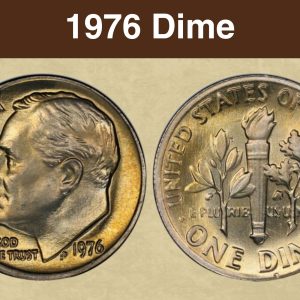
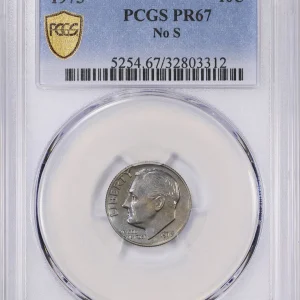
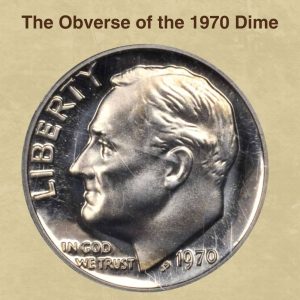
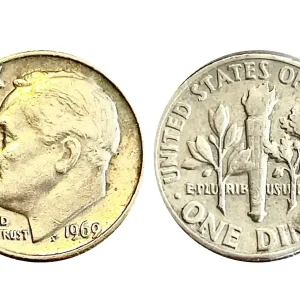
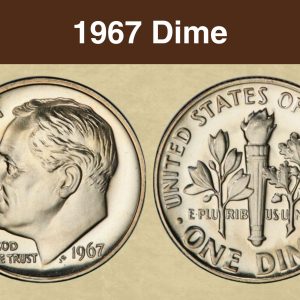
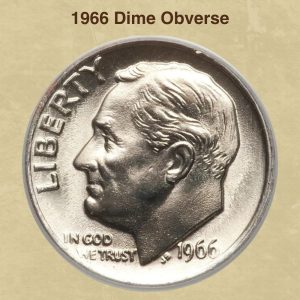
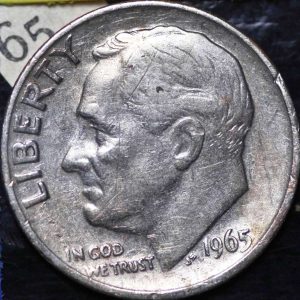
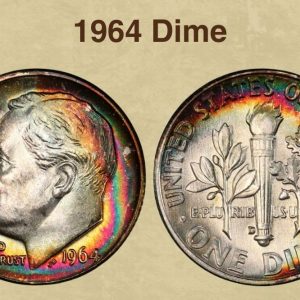
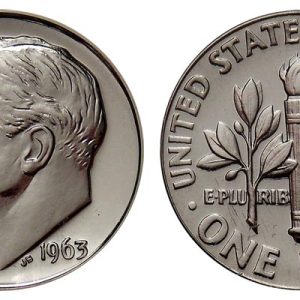
What is the error on the 1961 dime?
Common 1961 dime errors include double die reverse (DDR), where lettering is doubled, and re-punched mint marks (RPM) for the Denver mint. Other errors, such as off-center strikes, clipped planchets, and lamination errors (which can cause a “hole in the neck”), are also found and can increase a coin’s value depending on their severity and the coin’s overall condition.
Which dimes with no mint mark are worth money?
Dimes with no mint mark can be valuable if they are 1968-S No-S Proof, 1970-S No-S Proof, or 1982 No-S business strike Roosevelt Dimes, as these are rare error coins. However, most dimes from 1965–1967 lack a mint mark because it was deliberately removed from coins at the time, making them very common and not valuable beyond their face value.
How much is a 1961 D dime worth today?
1961 D Roosevelt Dime Value According to the NGC Price Guide, as of September 2025, a Roosevelt Dime from 1961 in circulated condition is worth between $3.45 and $3.95.